WW2 timeline: 20 important dates and milestones you need to know
Lasting six years and one day, the Second World War started on 1 September 1939 with Hitler's invasion of Poland and ended with the Japanese surrender on 2 September 1945. Here, we trace the timeline of a conflict that engulfed the world, with expert insight from Professor Jeremy Black and the late Terry Charman on 20 key milestones…
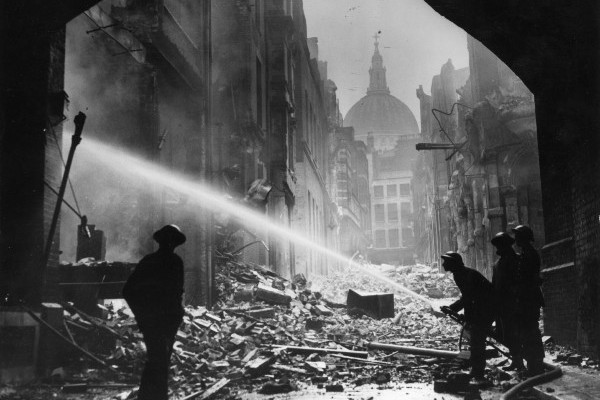
The Second World War was the deadliest and most destructive global conflict in history, claiming the lives of more than 50 million people. Adolf Hitler started the war in 1939 when his German forces invaded Poland.
When did WW2 start? 1 September 1939 | Did appeasement cause WW2?
When did it end? 2 September 1945 | Read more about how and when did WW2 end?
Which countries were involved? WW2 involved almost every part of the world. But the key players were the Axis powers on one side (Germany, Italy, and Japan) and on the other side the Allies (France, Great Britain, the United States, the Soviet Union, and, to a lesser extent, China)
How many people died? It has been estimated that 50 million soldiers and civilians died in WW2
Why did WW2 happen? We can now say without equivocation that this was Hitler’s war, say expert historians including Professor Richard Evans, Sir Ian Kershaw and Laurence Rees | Read more about why WW2 happened
Read on for a timeline for a list of the most important dates and milestones of WW2, with expert analysis from Professor Jeremy Black and late historian Terry Charman
Clash near the Marco Polo Bridge, close to Beijing, 7 July 1937
The triggering of the full-scale war with China that lasted until 1945 began with an obscure clash involving a Japanese unit on night manoeuvres near the Marco Polo Bridge southwest of Beijing on the night of 7–8 July 1937.
The Japanese felt the nation’s honour had been challenged and sent fresh forces to the region. Hardliners in the Japanese army used the incident to press for a settlement of China on their terms, while the Chinese nationalist leader, Jiang Jieshi, was unwilling to propriate Japan. As a result, an intractable struggle began that greatly weakened both sides.
Large-scale conflict broke out toward the end of July, and Beijing was occupied on 29 July.
By Professor Jeremy Black
The German invasion of Poland, 1 September 1939
The Second World War began at dawn on Friday 1 September 1939, when Adolf Hitler launched his invasion of Poland. The Poles fought bravely, but they were heavily outnumbered in both men and machines, and especially in the air.
Britain and France declared war on Germany on 3 September 1939, but gave no real assistance to Poland. Two weeks later, Stalin invaded eastern Poland, and on 27 September Warsaw surrendered. Organised Polish resistance ceased after another week’s fighting. Poland was divided up between Hitler and Stalin.
- Read more about the 1939 invasion of Poland
In Poland the Nazis unleashed a reign of terror that was eventually to claim six million victims, half of whom were Polish Jews murdered in extermination camps. The Soviet regime was no less harsh. In March and April 1940, Stalin ordered the murder of over 20,000 Polish officers and others who had been captured in September 1939. Tens of thousands of Poles were also forcibly deported to Siberia.
More like this
By May 1945, and despite his promises to Churchill and Roosevelt, Stalin had installed a subservient communist regime in Poland. Back in 1939, Poland’s then-leader Marshal Eduard Smigly-Rydz had warned, “With the Germans we risk losing our liberty, but with the Russians we lose our soul.”
By Terry Charman
Germans launch offensive in the West, 10 May 1940
The German unwillingness to limit their war to the conquest of Poland and to launch meaningful peace talks meant that the Second World War broadened out. Hitler was eager to profit from the ability Poland’s defeat offered for Germany to fight on only one front and argued that Germany enjoyed a window of opportunity thanks to being more prepared for war than Britain or France.
Bad weather in the severe winter of 1939–40, caution on the part of the German High Command, and the need for preparations, delayed the attack until May 1940. On 10 May, the Germans attacked Belgium and the Netherlands, both hitherto neutral, and invaded France. They successfully gained and used the initiative, while the French and British suffered from a failure to prepare for fluid defence in depth.
Germany’s success in its subsequent seven-week campaign transformed the strategic situation in Europe. Victory led Hitler to a conviction of his own ineluctable success, and that of the Wehrmacht under his leadership. Thanks to this victory, the Germans would clearly be able to fight on, and any successful challenge to them would now have to overcome German dominance of Western Europe.
By Professor Jeremy Black
The Battle of Britain, 25 July, 1940
After France’s surrender in June 1940, Churchill told the British people, “Hitler knows that he will have to break us in this island or lose the war”.
To mount a successful invasion, the Germans had to gain air superiority. The first phase of the battle began on 10 July with Luftwaffe attacks on shipping in the Channel.
- Your guide to the Battle of Britain
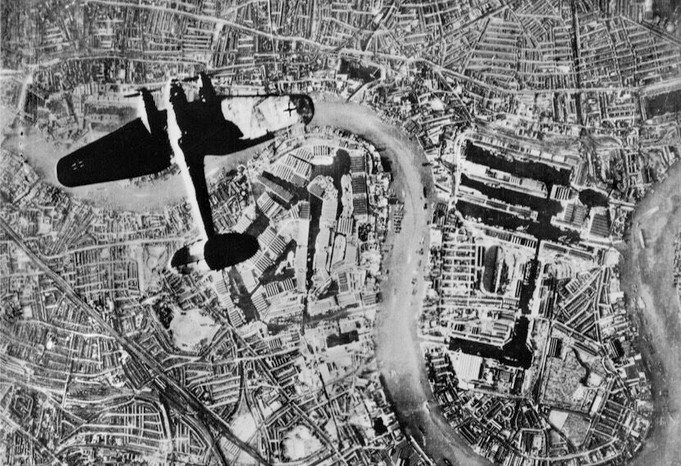
The following month, RAF Fighter Command airfields and aircraft factories came under attack. Under the dynamic direction of Lord Beaverbrook, production of Spitfire and Hurricane fighters increased, and despite its losses in pilots and planes, the RAF was never as seriously weakened as the Germans supposed.
- Read more | 6 Battle of Britain myths
By Terry Charman
The British also had the advantage that the battle was fought over home ground; pilots who survived their planes being shot down were soon back in action, while German aircrew went into ‘the bag’ as prisoners of war.
The battle continued until the end of October, but essentially it had been won in early September when the Germans diverted their resources to night bombing. Radar, ground crews, aircraft factory workers all contributed to the victory, but it was of the young pilots from Britain, the Commonwealth and Nazi-occupied Europe of whom Churchill spoke when he said, “Never in the field of human conflict was so much owed by so many to so few”.
By Terry Charman
The Blitz, 29 December 1940
The Blitz – an abbreviation of the word Blitzkrieg (lightning war) – was the name given to the German air attacks on Britain between 7 September 1940 and 16 May 1941. London was bombed by accident on the night of 24 August 1940, and the following night Churchill ordered an attack on Berlin.
This prompted the Germans to shift their main effort from attacking RAF airfields to bombing Britain’s towns and cities. 7 September 1940, ‘Black Saturday’, saw the beginning of the first major attacks on London. The capital was bombed for 57 consecutive nights, when more than 13,650 tons of high explosive and 12,586 incendiary canisters were dropped by the Luftwaffe.
- Read more | Lucy Worsley on Blitz Spirit: the courageous stories of six Londoners
Beginning with Coventry on 14 November 1940, the Germans also began bombing other cities and towns while still keeping up attacks on London. More than 43,000 civilians were killed in the Blitz and much material damage was done, but British morale remained unbroken and Britain’s capacity to wage war was unimpaired.
In Winston Churchill’s words, Hitler had tried and failed “To break our famous island race by a process of indiscriminate slaughter and destruction”.
By Terry Charman
Operation Barbarossa: the German invasion of Russia, June 1941
Since the 1920s, Hitler had seen Russia, with its immense natural resources, as the principal target for conquest and expansion. It would provide, he believed, the necessary ‘Lebensraum’, or living space, for the German people. And by conquering Russia, Hitler would also destroy the “Jewish pestilential creed of Bolshevism”. His non-aggression pact with Stalin in August 1939 he regarded as a mere temporary expedient.
Barely a month after the fall of France, and while the Battle of Britain was being fought, Hitler started planning for the Blitzkrieg campaign against Russia, which began on 22 June 1941. Despite repeated warnings, Stalin was taken by surprise, and for the first few months the Germans achieved spectacular victories, capturing huge swathes of land and hundreds of thousands of prisoners. But they failed to take Moscow or Leningrad before winter set in.
On 5/6 December, the Red Army launched a counter-offensive which removed the immediate threat to the Soviet capital. It also brought the German high command to the brink of a catastrophic military crisis. Hitler stepped in and took personal command. His intervention was decisive and he later boasted, “That we overcame this winter and are today in a position again to proceed victoriously… is solely attributable to the bravery of the soldiers at the front and my firm will to hold out…”
By Terry Charman
Pearl Harbor, 7 December 1941
After Japan’s occupation of French Indo-China in July 1941, US President Franklin D Roosevelt, followed by Britain and the Netherlands, ordered the freezing of Japanese assets. Many Japanese now believed that there was no alternative between economic ruin and going to war with the United States and the European colonial powers.
In October 1941, a hardline government under General Hideki Tojo came to power, and preparations were made to deliver a devastating blow against the Americans.
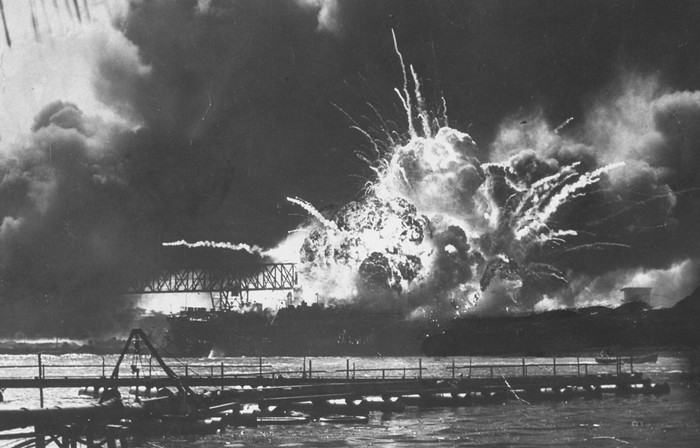
On 7 December 1941, “a date which will live in infamy,” Japanese carrier-borne aircraft attacked the US Pacific fleet at its base at Pearl Harbor in the Hawaiian Islands.
Despite warnings, the Americans were caught completely by surprise. Eight battleships were put out of action, and seven other warships damaged or lost. More than 2,500 Americans were killed, while the Japanese lost only 29 planes. Crucially, the American carriers were at sea and so escaped, and the base itself was not put out of action. The following day Congress declared war on Japan, which had also attacked British and Dutch colonial possessions.
- Read more about the 1941 attack on Pearl Harbor
On 11 December, Hitler declared war on the United States, and the war was now truly a global conflict. The Japanese were initially victorious everywhere, but Admiral Isoroku Yamamoto warned: “We can run wild for six months or a year, but after that I have utterly no confidence”.
By Terry Charman
The fall of Singapore, 15 February 1942
The Japanese began their invasion of Malaya on 8 December 1941, and very soon the British and empire defenders were in full retreat. Told previously that the Japanese were no match for European troops, morale among the defending forces slumped as General Tomoyuki Yamashita’s forces moved swiftly southwards towards Singapore.
The sinking of the British capital ships HMS Prince of Wales and Repulse by Japanese aircraft also contributed to the decline in morale, and panic began to set in among the civil population and the fighting troops.
British commander Lieutenant General Arthur Percival had hoped to make a stand at Johore, but was forced to withdraw to Singapore Island. The Japanese landed there on 8/9 February, and before long the defence collapsed. To avoid further bloodshed, and with his water supply gone, Percival surrendered on 15 February.
Churchill described the surrender as, “the worst disaster… in British military history”. More than 130,000 British and empire troops surrendered to a much smaller Japanese force, which only suffered 9,824 battle casualties during the 70-day campaign. Singapore was not only a humiliating military defeat, but also a tremendous blow to the prestige of the ‘white man’ throughout Asia.
By Terry Charman
Midway, 4 June 1942
For six months after Pearl Harbor, just as Admiral Yamamoto predicted, Japanese forces carried all before them, capturing Hong Kong, Malaya, the Philippines and the Dutch East Indies. In May 1942, in an attempt to consolidate their grip on their new conquests, the Japanese sought to eliminate the United States as a strategic Pacific power.
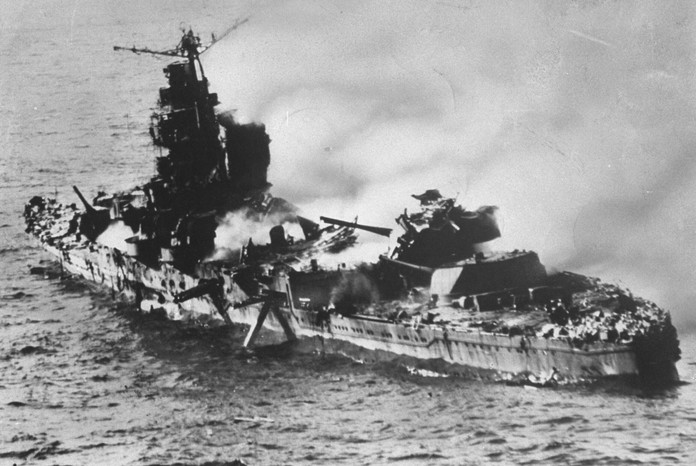
This would be done by luring into a trap the US navy carriers that had escaped Pearl Harbor, while at the same time the Japanese would occupy the Midway atoll in preparation for further attacks. The loss of the carriers would, the Japanese hoped, force the Americans to the negotiating table.
In the event, it was the Americans who inflicted a crushing defeat on the Japanese. Their codebreakers were able to determine the location and date of the Japanese attack. This enabled US admiral Chester Nimitz to organise a trap of his own.
- Read more about the battle of Midway
During the ensuing battle the Japanese suffered the loss of four carriers, one heavy cruiser and 248 aircraft, while American losses totalled one carrier, one destroyer and 98 planes. By their victory at Midway, the turning point of the Pacific war, the Americans were able to seize the strategic initiative from the Japanese, who had suffered irreplaceable losses. Admiral Nimitz described the battle’s success as “Essentially a victory of intelligence”, while President Roosevelt called it “Our most important victory in 1942… there we stopped the Japanese offensive.”
By Terry Charman
- Read about other significant battles of WW2
Alamein, 25 October 1942
The North African campaign began in September 1940, and for the next two years the fighting was marked by a succession of Allied and Axis advances and retreats. In the summer of 1942, the Axis forces under ‘Desert Fox’ field marshal, Erwin Rommel, looked poised to take Cairo and advance on the Suez Canal.
The British Middle East commander General Claude Auchinleck took personal command of the defending Eighth Army and halted the retreat at the strong defensive line at El Alamein. But Churchill, dissatisfied with Auchinleck, replaced him in August with General Harold Alexander, while Lieutenant-General Bernard Montgomery took over command of the Eighth Army.
Montgomery immediately began to build up an enormous superiority in men and equipment, finally launching his offensive at Alamein on 23 October 1942. By the beginning of November, the Axis forces were in full retreat, although final victory in North Africa was not achieved until May 1943.
Although Montgomery has been criticised for being too cautious in exploiting his success at Alamein, it made him a household name and he became Britain’s most popular general of the war. Churchill hailed Alamein as a “Glorious and decisive victory… the bright gleam has caught the helmets of our soldiers, and warmed and cheered all our hearts”.
By Terry Charman
- Read more | El Alamein: The British empire’s last hurrah
Stalingrad, February 1943
The battle for Stalingrad began in late August 1942, and by 12 September, German troops of the Sixth and Fourth Panzer Armies had reached the city’s suburbs. Bearing the name of Russia’s leader, Stalingrad had a symbolic significance as well as a strategic one.
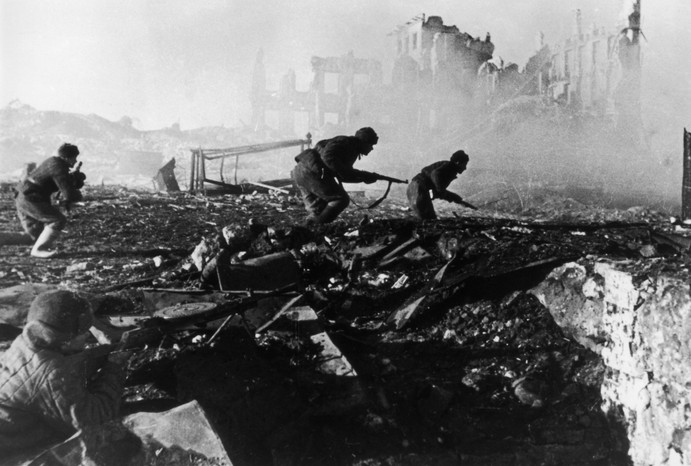
Throughout September and October, under General Vassili Chuikov, the city’s defenders contested every yard of ground of the devastated city. The Red Army’s stubborn defence allowed General Georgi Zhukov time to prepare a counterattack that was launched on 19 November 1942, and which soon trapped the Sixth Army commanded by General Friederich Paulus.
Hitler, wrongly assured by Göring that the Luftwaffe could supply Stalingrad by air, ordered Paulus to hold out. He also ordered Field Marshal Erich Manstein to break through and relieve the beleaguered Sixth Army. Manstein was unsuccessful, and on 31 January 1943 Paulus capitulated.
Of the 91,000 German troops who went into captivity, less than 6,000 returned home after the war. Stalingrad was one of Germany’s greatest defeats, and it effectively marked the end of Hitler’s dreams of an empire in the east.
By Terry Charman
- Read more on the top 10 military blunders in history
Germans launch battle of Kursk
The last major German offensive on the Eastern Front sought to exploit the opportunities provided by a major German salient. They sought to break through the flanks of the salient and to achieve an encirclement triumph to match the Soviet success at Stalingrad the previous winter.
Still engaging in strategic wishful thinking, Hitler saw this as a battle of annihilation in which superior will would prevail. He hoped that victory would undermine the Allied coalition, by lessening western confidence in the likelihood of Soviet victory and increasing Soviet demands for a second front in France.
The Germans were outnumbered by the Soviets who had prepared a defence system that thwarted the German tank offensive. After heavy losses and only modest gains, Hitler cancelled the operation that had cost him much strength. Having stopped the Germans, the Soviets were now in a position to counterattack. The Germans were now to be driven back in a near-continuous process.
By Professor Jeremy Black
D-Day, Operation Overlord, 6 June 1944
Operation Overlord, the invasion and liberation of north-west Europe, began on D-Day, 6 June 1944. That day, under the overall command of US General Dwight Eisenhower, British, Canadian and American troops, supported by the Allied navies and air forces, came ashore on the coast of Normandy. By the end of the day, 158,000 men, including airborne troops, had landed.
Initially, except on the American Omaha beach, German resistance was unexpectedly light. But it soon stiffened and the Allied breakout from the beachhead area was painfully slow.
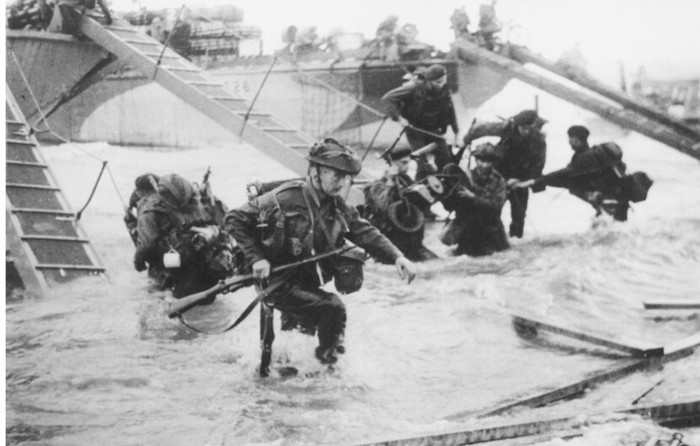
The fierceness of the fighting can be gauged by the fact that in Normandy British infantry battalions were suffering the same percentage casualty rates as they had on the Western Front in 1914–1918. Eventually the breakout was achieved, and on 25 August, Paris was liberated. Brussels followed on 3 September.
Hopes that the war might be won in 1944 were dashed by the Allied failure at Arnhem and the unexpected German offensive in the Ardennes in December. It was not until 4 May 1945 that the German forces in north-west Europe surrendered to Montgomery at his HQ on Lüneburg Heath.
By Terry Charman
23–26 October 1944: Battle of Leyte Gulf
The Americans used their naval and air superiority, already strong and rapidly growing, to mount a reconquest of the Philippines from October 1944. That operation helped ensure a naval battle: that of Leyte Gulf of 23–26 October, the largest naval battle of the war and one (or rather a series of engagements) that secured American maritime superiority in the western Pacific.
The availability of oil helped determine Japanese naval dispositions and, with carrier formations based in home waters and the battle force based just south of Singapore, any American movement against the Philippines presented a very serious problem for Japan. There was growing pessimism in Japan and losing honourably became a goal for at least some Japanese naval leaders. The head of the Naval Operations Section asked on 18 October 1944 that the fleet be afforded “a fitting place to die” and “the chance to bloom as flowers of death”.
With Operation Sho-Go (Victory Operation) the Japanese sought to intervene by luring the American carrier fleet away, employing their own carriers as bait, and then using two naval striking forces (under Vice-Admirals Kurita and Kiyohide respectively) to attack the vulnerable American landing fleet. This overly complex scheme posed serious problems for the ability of American admirals to read the battle and control the tempo of the battle, and, as at Midway, for their Japanese counterparts in following the plan.
In a crisis for the American operation, one of the strike forces was able to approach the landing area and was superior to the American warships. However, instead of persisting, the strike force retired; its exhausted commander, Kurita, lacking knowledge of the local situation, not least due to the difficulties of identifying enemy surface ships.
The net effect of the battle was the loss of four Japanese carriers, three battleships including the Musashi, 10 cruisers, other warships and many aircraft.
By Professor Jeremy Black
Yalta: The Big Three, February 1945
Between June 1940 and June 1941, Britain stood alone against Hitler. But then, after the German invasion of Russia and the Japanese attack on Pearl Harbor, she gained two powerful allies. For the next four years Churchill did his utmost to foster ‘The Grand Alliance’ against the Nazis. He even earned the grudging admiration of Nazi propaganda chief Dr Goebbels who said, “…I can feel only respect for this man, for whom no humiliation is too base and no trouble too great when the victory of the Allies is at stake”.
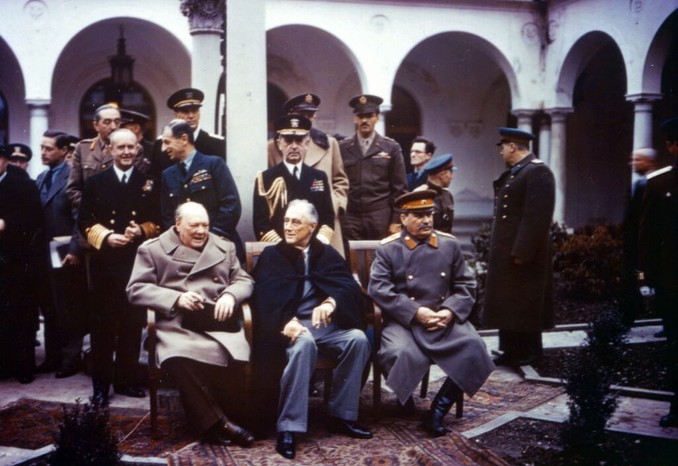
Churchill conferred with both Roosevelt and Stalin to hammer out strategy and to discuss postwar arrangements. The three men congregated for the first time at Tehran in November 1943. There, and again at their last meeting at Yalta, Churchill was conscious of the fact that Britain, exhausted by her war effort, was now very much the junior partner of the two emerging superpowers.
- Opinion | Did Britain really stand alone in WW2?
At Yalta, the postwar division of Germany was agreed upon as was the decision to bring war criminals to trial. The future constitution of the United Nations was discussed, and Stalin undertook to enter the war against Japan after Germany had been defeated. But the future of eastern Europe remained a stumbling block. With the Red Army in occupation, the Soviet dictator was disinclined to listen to the views of his two allies.
By Terry Charman
The bombing of Dresden, 13/14 February 1945
At Yalta, an Allied plan to bomb the hitherto untouched city of Dresden was discussed. The reason for attacking the city was due principally to its strategic importance as a communications centre in the rear of the German retreat that followed the Soviet winter offensive of January 1945. It was also believed that Dresden might be used as an alternative to Berlin as the Reich capital.
The attack was part of a plan codenamed ‘Thunderclap’, designed to convince the Germans that the war was lost. It was drawn up in January 1945, when Hitler’s Ardennes offensive, V2 rocket attacks on Britain and the deployment of snorkel-equipped U-boats clearly demonstrated that Germany was still capable of offering stubborn resistance. Strategic bombing attacks had previously failed to break Germany, although they had proved valuable in reducing its capacity to wage war.
Now, on the night of 13/14 February 1945, Dresden was attacked by 800 RAF bombers, followed by 400 bombers of the United States Army Air Force. The bombing created a firestorm that destroyed 1,600 acres of Dresden. Even today it is still uncertain as to how many died, and estimates have ranged from 25,000 to 135,000. Most authorities now put the death toll at around 35,000.
The scale of destruction, the enormous death toll, and its timing at such a late stage in the war, have all ensured that the bombing of Dresden still remains highly controversial.
By Terry Charman
The liberation of Bergen-Belsen, 17 April 1945
Bergen-Belsen concentration camp was liberated by the British Army on 15 April 1945. The photographs, newsreel films and Richard Dimbleby’s moving BBC broadcast from the camp sent a shockwave of horror and revulsion through Britain. Stories about concentration camps and the Nazi persecution and extermination of the Jews had been circulating since 1933, but this was the first time that the British public were faced with the reality of Hitler’s Final Solution of the Jewish Question – the Holocaust.
Even today it is not known for certain when the order to set about systematic extermination of European Jewry was given. But by December 1941, the first extermination camp at Chelmno in German-occupied Poland was in operation, while mass shootings of Soviet Jews had begun in June.
On 20 January 1942, a meeting of Nazi bureaucrats took place at Wannsee, near Berlin, to discuss the technicalities of the Final Solution. It is estimated that nearly six million Jews were murdered by the Nazis and their collaborators, more than 1.1 million in the gas chambers of Auschwitz, the largest extermination camp in German-occupied Poland.
During the Second World War, Hitler’s racial policies also claimed many millions of non-Jewish victims, including Soviet prisoners of war, those with mental and physical disabilities, gypsies (Roma and Sinti), homosexuals and Jehovah’s Witnesses. The future Archbishop of Canterbury Robert Runcie saw Belsen just after it was liberated. Years later he said,“ A war that closed down Belsen was a war worth fighting”.
By Terry Charman
Learn more about the horrors of the Holocaust and those responsible:
- 12 things you need to know about Anne Frank and her diary
- Forgotten trials: the other side of Nuremberg
- Experiments in evil: the shocking efforts to understand the atrocities of the Holocaust
- Laurence Rees on the perpetrators of the Holocaust: “What they told us was, at the time, they felt it was the right thing to do”
VE Day, 8 May 1945
On the afternoon of 8 May 1945, the British prime minister Winston Churchill made the radio announcement that the world had long been waiting for. “Yesterday morning,” he declared, “at 2.41 a.m., at General Eisenhower’s headquarters, General Jodl, the representative of the German High Command, and Grand Admiral Dönitz, the designated head of the German State, signed the act of unconditional surrender of all German land, sea and air forces in Europe.”
After nearly six years, the war in Europe was finally over.
But while VE Day marked the end of the Second World War in Europe, fighting in the far east would continue for another three-and-a-half months. As a consequence, there was always a slightly solemn undercurrent to the celebrations of VE Day.
Japan was not finally defeated until after the atomic bomb attacks on Hiroshima and Nagasaki in August 1945...
By Terry Charman
Nagasaki, 9 August 1945
On 2 August 1939, Albert Einstein wrote a letter to President Roosevelt alerting him to the military potential of splitting the atom. Fears that German scientists might be working on an atomic bomb, prompted the Americans and British to set up the Manhattan Project to develop their own atomic weapon. It was successfully tested in the desert near Alamogordo in New Mexico on 16 July 1945 and the news was flashed to Roosevelt’s successor Harry Truman, who was meeting Churchill and Stalin at Potsdam.
Although the bomb had been conceived with Germany as the target, it was now seen as both a way of quickly ending the war with Japan, and as a lever to apply political pressure on the Russians.
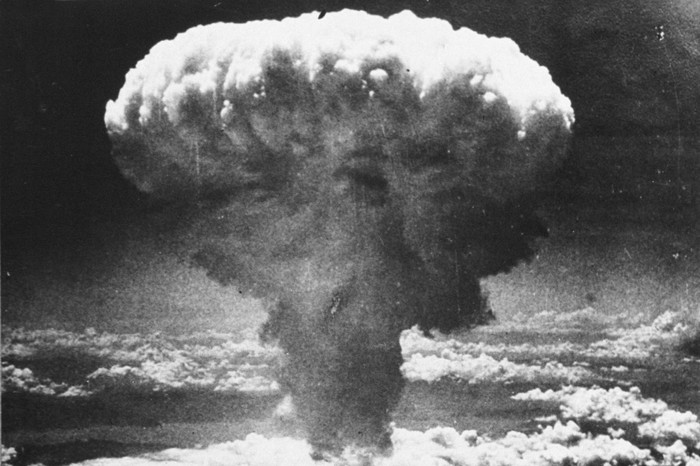
Although the Japanese were warned that if they carried on fighting their homeland would face “utter devastation”, they continued to resist with their usual fanaticism. Thus, the first atomic bomb to be used militarily, codenamed Little Boy, was dropped on Hiroshima on 6 August 1945.
An estimated 78,000 people died and 90,000 others were seriously injured. Three days later a second bomb, Fat Man, was dropped on Nagasaki causing a similar loss of life.
By Terry Charman
Japan surrenders, 2 September 1945
The dropping of the atomic bombs brought about the quick acceptance of Allied terms and Japan surrendered on 14 August 1945. Japan publicly announced its surrender on 15 August 1945. This day has since been commemorated as Victory over Japan – or ‘VJ’ – Day.
But the official surrender documents were not signed until 2 September, which is considered VJ Day in the USA. The formal surrender took place on USS Missouri in Tokyo Bay on 2 September 1945, six years and one day after the Germans invaded Poland. The Second World War was officially over.
By Terry Charman
Jeremy Black is a professor of history at the University of Exeter who specialises in British and continental European history. His publications include The Age of Total War, 1860–1945 (Praeger Publishers Inc, 2006) and World War Two: A Military History (Routledge, 2003)
The late Terry Charman was a senior historian at the Imperial War Museum London and the author of Outbreak 1939: The World Goes to War (Virgin, 2009)
These WW2 dates first appeared in BBC History Magazine's Collectors' Edition 'The Second World War Story'

Start the year with a subscription to BBC History Magazine - £5 for your first 5 issues!
As a print subscriber you also get FREE membership to HistoryExtra.com worth £34.99 + 50% London Art Fair 2024 Tickets




